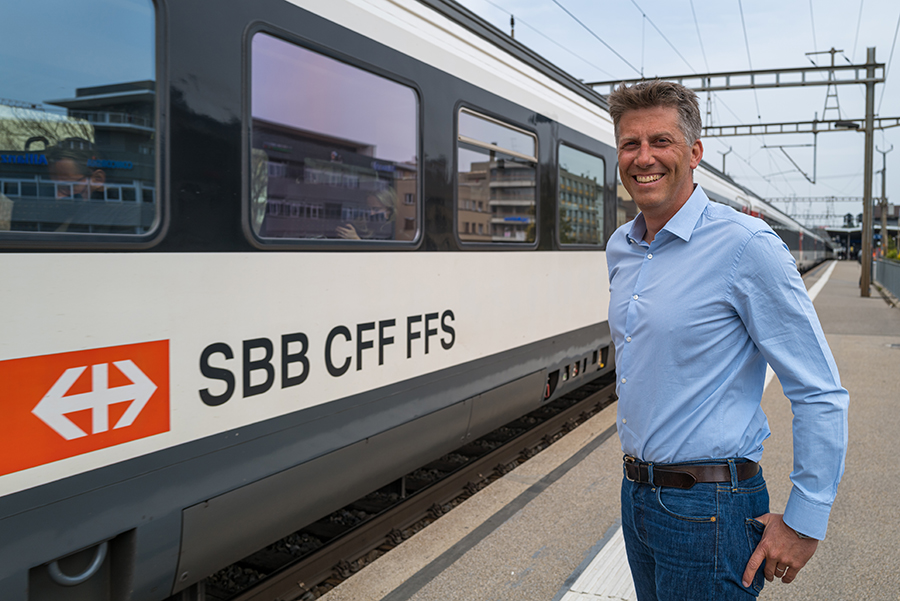As travel becomes more connected and intermodal, having unified digital systems that simplify the passenger journey across land, sea and air will become increasingly important. We asked Benoit Verbaere, Director of Business Development, Travel and Transportation, to share his thoughts on the digital shift brought on by the COVID-19 pandemic and explain how SITA is bringing its IT and expertise to the wider travel market.
As the pandemic reshaped travel, how do you see the state of the market right now? How does the landscape look from a recovery point of view?
The pandemic didn’t quash peoples’ desire to travel. It has reshaped how they want to travel. Passengers have told us they want an easy travel experience that uses technology – such as their smartphones – to facilitate each step of the journey. COVID-19 has had a profound impact on how the travel industry operates, forcing it to refocus on the passenger journey as a near-walkthrough digital experience. From SITA’s own research, we have seen IT investment priorities among airlines and airports shift to more self-service, biometrics, and touchless technologies. This is no different for other modes of transport.
Are the common requirements to the wider travel industry the same as for air? How is SITA positioned to help?
Whatever the form of travel, there’s the need for safe and seamless automated journeys, smarter more efficient borders, better on-time performance, and greater capacity. Across the travel industry we face similar issues and there is a need to tackle these together through common and shared approaches — be that for air travel, cruises, railways, or events.
SITA has developed solutions for the air transport industry where passengers can use their mobile phone to manage every step of their journey and their face to be recognized at each touchpoint. For example, our SITA Flex cloud platform enables passengers to use their mobile anywhere in the airport without having to visit a fixed check-in desk or kiosk. It uses APIs and the cloud to extract and manage journey data, giving passengers a mobile self-service and automated journey whether on or off the airport. Combined with SITA’s Smart Path, our biometric self-service solution, passengers can be identified at each step using their face as identity.
This digital passenger experience can be replicated across other modes of transport. For example, biometric boarding would allow cruise passengers who have registered their passport and biometrics on the cruise app to embark the ship using only their face.
Railway stations also have common requirements to airports in the way they manage their stations. They need to improve passenger flow with better signage, manage disruption by providing timely information, communicate with travelers in multiple languages, and integrate operational and passenger data. Again, they can leverage our expertise and solutions we have developed for airlines and airports.
We have the solutions, expertise, and services to deliver a connected journey no matter what mode of travel.
We have seen, particularly across Europe, a move to more intermodal travel with rail to flight or cruise. How can we help to make these journeys more seamless?
Today, travelers want an interconnected and joined up travel experience – whether traveling by road, air, or rail – and as with every other aspect of our lives, managed through their mobile. From the moment they walk out the door to take a train to the airport, they want each step of the journey to fit neatly with the next. Intermodal travel solutions are not new, but up until now, they haven’t been integrated. While today, you can buy a ticket that combines both air and rail, often the journey is not seamless. Here’s where we can help.
At SITA, we have the experience of bringing multiple stakeholders together through a single platform and helping adopt digital ways of simplifying experiences and operations. If you look at a single flight from say, Paris to Geneva, there are up to 10 stakeholders – airline, airports, border agency and ground handlers – that need to work together to support that flight. Our solutions enable that. As we move to an intermodal ecosystem of 100+ active contributors to deliver the connected journey, we are able to support the unified digital systems that simplify the journey. And the journey doesn’t stop upon arrival. It takes you right up to the doorstep of global events and tourism experiences. We add value in servicing these intermodal offers, where capturing data and translating the data models from one industry to another in a consistent manner is key.
We have a strong Border solution used mainly in the airport. Can these solutions be used at other borders, such as at sea?
We started our border business in 1996 in readiness for the 2000 Olympic Games in Sydney. Our business is focused on the safe movement of people. Whether it is major events such as the FIFA World Cup in South Africa, or a family going on holiday, we have been there to make it easy and more secure. Over the years, we’ve fine-tuned our intelligence and targeting capabilities to help governments detect suspicious activity and take the targeted steps to safeguard their borders. Following the COVID-19 pandemic, Border solutions have also played a critical role in mitigating health risks and re-establishing passenger trust. Now with a complete end-to-end border management portfolio spanning the entire passenger journey, we’re in a great position to extend our aviation expertise to land and sea borders. It’s another step towards delivering a completely seamless and secure experience whether you travel by plane, train, or automobile.
Simplifying data exchange and improving the safety and traveler experience is in the interest of all stakeholders. I’m excited to see what the future holds.




 Share
Share



